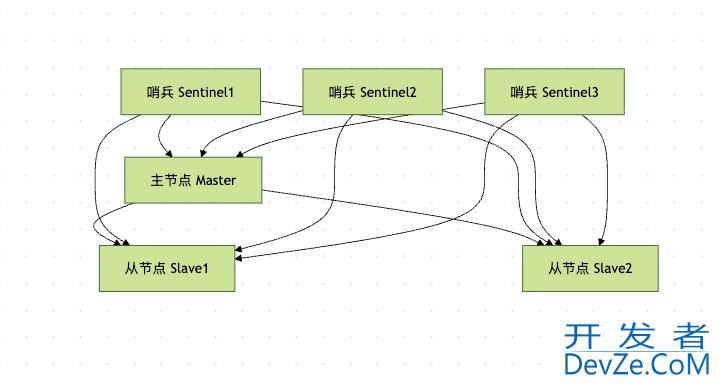mysql中json_extract的使用方法实例详解
目录
- 一、前言
- 二、创建示例表
- 三、基本语法
- - 获取jsON对象中某个key对应的value值
- - 获取JSON数组中某个元素
- - 获取JSON中的嵌套数据
- 四、渐入佳境
- - 获取JSON多个路径的数据
- - 路径表达式*的使用
- - 返回NULL值
- - 返回错误
- 五、使用场景
- 六、参考文档
- 总结
一、前言
mysql5.7版本开始支持JSON类型字段,本文详细介绍json_extract函数如何获取mysql中的JSON类型数据
json_extract可以完全简写为 ->json_unquote(json_extract())可以完全简写为 ->>下面介绍中大部分会利用简写
二、创建示例表
CREATE TABLE `test_json` ( `id` int(11) NOT NULL AUTO_INCREMENT, `content` json DEFAULT NULL, PRIMARY KEY (`id`) ) ENGINE=InnoDB AUTO_INCREMENT=3 DEFAULT CHARSET=utf8mb4;
# 插入两条测试用的记录
INSERT INTO `test_json` (`content`) VALUES ('{\"name\":\"tom\",\"age\":18,\"score\":[100,90,87],\"address\":{\"province\":\"湖南\",\"city\":\"长沙\"}}');
INSERT INTO `test_json` (`content`) VALUES ('[1, "apple", "red", {"age": 18, "name": "tom"}]');
| id | content |
|---|---|
| 1 | {“age”: 18, “name”: “tom”, “score”: [100, 90, 87], “address”: {“city”: “长沙”, “province”: “湖南”}} |
| 2 | [1, “apple”, &开发者_数据库ldquo;red”, {“age”: 18, “name”: “tom”}] |
三、基本语法
- 获取JSON对象中某个key对应的value值
- json_extract函数中,第一个参数content表示json数据,第二个参数为json路径,其中$表示该json数据本身,$.name就表示获取json中key为name的value值
- 可以利用 -> 表达式来代替json_extract
- 若获取的val本身为字符串,那么获取的val会被引号包起来,比如"tom",这种数据被解析到程序对象中时,可能会被转义为\“tom\”。为了解决这个问题了,可以在外面再包上一层json_unquote函数,或者使用 ->> 代替->
content:
{“age”: 18, “n编程ame”: “tom”, “score”: [100, 90, 87], “address”: {“city”: “长沙”, “province”: “湖南”}}
# 得到"tom" select json_extract(content,'$.name') from test_json where id = 1; # 简写方式:字段名->表达式等价于json_extract(字段名,表达式) select content->'$.name' from test_json where id = 1; # 结果: +--------------------------------+ | json_extract(content,'$.name') | +--------------------------------+ | "tom" | +--------------------------------+ +-------------------+ | content->'$.name' | +-------------------+ | "tom" www.devze.com | +-------------------+ # 解除双引号,得到tom select json_unquote(json_extract(content,'$.name')) from test_json where id = 1; # 简写方式:字段名->>表达式等价于json_unquote(json_extract(字段名,表达式)) select content->>'$.name' from test_json where id = 1; # 结果: +----------------------------------------------+ | json_unquote(json_extract(content,'$.name')) | +----------------------------------------------+ | tom | +----------------------------------------------+ +--------------------+ | content->>'$.name' | +--------------------+ | tom | +--------------------+
- 获取JSON数组中某个元素
- json_extract函数中,第一个参数content表示json数据,第二个参数为json路径,其中$表示该json数据本身,$[i]表示获取该json数组索引为i的元素(索引从0开始)
- 与获取key-val一样,若获取的元素为字符串,默认的方式也会得到双引号包起来的字符,导致程序转义,方法也是利用json_unquote函数,或者使用 ->> 代替->
content:
[1, “apple”, “red”, {“age”: 18, VkHmez“name”: “tom”}]
# 得到"apple" select json_extract(content,'$[1]') from test_json where id = 2; # 简写,效果同上 select content->'$[1]' from test_json where id = 2; # 结果: +------------------------------+ | json_extract(content,'$[1]') | +------------------------------+ | "apple" | +------------------------------+ +-----------------+ | content->'$[1]' | +-----------------+ | "apple" | +----------编程客栈-------+ # 解除双引号,得到apple select json_unquote(json_extract(content,'$[1]')) from test_json where id = 2; # 简写,效果同上 select content->>'$[1]' from test_json where id = 2; # 结果: +--------------------------------------------+ | json_unquote(json_extract(content,'$[1]')) | +--------------------------------------------+ | apple | +--------------------------------------------+ +------------------+ | content->>'$[1]' | +------------------+ | apple | +------------------+
- 获取JSON中的嵌套数据
结合前面介绍的两种获取方式,可以获取json数据中的嵌套数据
content: id=1
{“age”: 18, “name”: “tom”, “score”: [100, 90, 87], “address”: {“city”: “长沙”, “province”: “湖南”}}content: id=2[1, “apple”, “red”, {“age”: 18, “name”: “tom”}]
# 得到:87 select content->'$.score[2]' from test_json where id = 1; # 结果: +-----------------------+ | content->'$.score[2]' | +-----------------------+ | 87 | +-----------------------+ # 得到:18 select content->'$[3].age' from test_json where id = 2; # 结果: +---------------------+ | content->'$[3].age' | +---------------------+ | 18 | +---------------------+
四、渐入佳境
- 获取JSON多个路径的数据
将会把多个路径的数据组合成数组返回
content: id=1
{“age”: 18, “name”: “tom”, “score”: [100, 90, 87], “address”: {“city”: “长沙”, “province”: “湖南”}}
select json_extract(content,'$.age','$.score') from test_json where id = 1; # 结果: +-----------------------------------------+ | json_extract(content,编程'$.age','$.score') | +-----------------------------------------+ | [18, [100, 90, 87]] | +-----------------------------------------+ select json_extract(content,'$.name','$.address.province','$.address.city') from test_json where id = 1; # 结果: +----------------------------------------------------------------------+ | json_extract(content,'$.name','$.address.province','$.address.city') | +----------------------------------------------------------------------+ | ["tom", "湖南", "长沙"] | +----------------------------------------------------------------------+
- 路径表达式*的使用
将会把多个路径的数据组合成数组返回
# 先插入一条用于测试的数据
INSERT INTO `test_json` (`id`,`content`) VALUES(3,'{"name":"tom","address":{"name":"中央公园","city":"长沙"},"class":{"id":3,"name":"一年三班"},"friend":[{"age":20,"name":"marry"},{"age":21,"name":"Bob"}]}')
content: id=3
{“name”: “tom”, “class”: {“id”: 3, “name”: “一年三班”}, “friend”: [{“age”: 20, “name”: “marry”}, {“age”: 21, “name”: “Bob”}], “address”: {“city”: “长沙”, “name”: “中央公园”}}
# 获取所有二级嵌套中key=name的值 # 由于friend的二级嵌套是一个数组,所以.name获取不到其中的所有name值 select content->'$.*.name' from test_json where id = 3; +----------------------------------+ | content->'$.*.name' | +----------------------------------+ | ["一年三班", "中央公园"] | +----------------------------------+``` # 获取所有key为name值的数据,包括任何嵌套内的name select content->'$**.name' from test_json where id = 3; +---------------------------------------------------------+ | content->'$**.name' | +---------------------------------------------------------+ | ["tom", "一年三班", "marry", "Bob", "中央公园"] | +---------------------------------------------------------+ # 获取数组中所有的name值 select content->'$.friend[*].name' from test_json where id = 3; +-----------------------------+ | content->'$.friend[*].name' | +-----------------------------+ | ["marry", "Bob"] | +-----------------------------+
- 返回NULL值
content: id=1
{“age”: 18, “name”: “tom”, “score”: [100, 90, 87], “address”: {“city”: “长沙”, “province”: “湖南”}}
寻找的JSON路径都不存在
# age路径不存在,返回NULL # 若有多个路径,只要有一个路径存在则不会返回NULL select json_extract(content,'$.price') from test_json where id = 1; +---------------------------------+ | json_extract(content,'$.price') | +---------------------------------+ | NULL | +---------------------------------+
路径中有NULL
# 存在任意路径为NULL则返回NULL select json_extract(content,'$.age',NULL) from test_json where id = 1; +------------------------------------+ | json_extract(content,'$.age',NULL) | +------------------------------------+ | NULL | +------------------------------------+
- 返回错误
若第一个参数不是JSON类型的数据,则返回错误
select json_extract('{1,2]',$[0])
若路径表达式不规范,则返回错误
select content->'$age' from test_json where id = 1; # 结果: ERROR 3143 (42000): Invalid JSON path expression. The error is around character position 1.
五、使用场景
JSON_EXTRACT函数通常用于要获取JSON中某个特定的数据或者要根据它作为判断条件时使用
六、参考文档
- mysql5.7官方文档
- https://www.sjkjc.com/mysql-ref/json_extract
总结
到此这篇关于mysql中json_extract使用方法的文章就介绍到这了,更多相关mysql中json_extract使用内容请搜索我们以前的文章或继续浏览下面的相关文章希望大家以后多多支持我们!






 加载中,请稍侯......
加载中,请稍侯......
精彩评论